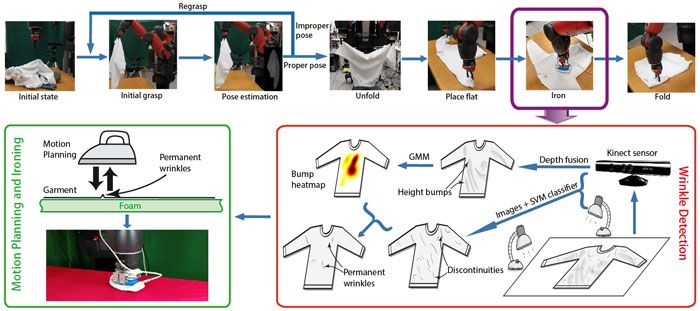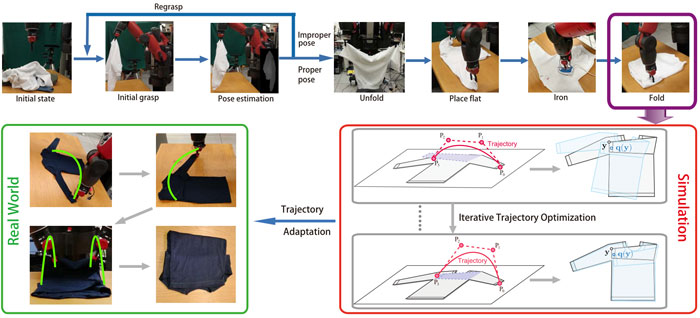Most people rank ironing as one of the dullest of household chores, so it sounds like a good contender for a task to be allocated to your household domestic robot. However ironing isn't as simple as it may appear; the clothes we iron are soft and flexible and change shape when handled – that's hard for a robot brain to handle. Thankfully GPU accelerated machine learning and an ironing robot equipped with a Microsoft Kinect Camera can help conquer the task of ironing, say researchers from Columbia University.

Yinxiao Li, from Columbia University, is the lead author on a paper set to be published at the IEEE International Conference on Robotics. The paper is the latest in a series published over the last three years on the wrinkly subject of ironing clothes. The researchers have been studying the 'ironing pipeline' in order to be able to teach / instruct robots in the fine art of ironing. Ironing has been broken down into a four step process to be computer analysed; how to pick up a garment, recognize it, lay it out and iron it, and then fold it. Of course different types of clothes need to be ironed and the robot needs to work with real clothes, not just some 'standards', so the robot was trained with different types/designs of clothing and laundry tasks until it knew what it was doing.
GPUs have been essential to the learning and ironing processes. "GPUs give us real-time results," Li says. "With the help of the GPU, we can reconstruct the garment at the same time we’re rotating it."
The ironing department is looking forward to a Pascal GPU upgrade
To start its ironing work the Robot first picks up a garment at a random point and rotates it in front of a Microsoft Kinect camera to recognise it. GPU's dramatically speed up that process. Once the robot knows its holding a shirt, for example, it knows how to position it for ironing. Sensors then are used to detect wrinkles and apply ironing pressure to ease them out. The robot ends by folding the garment.

Ironing is the focus of this particular machine learning study but the researchers say that handling flexible objects such as laundry will provide useful insights for robots set to work with flexible materials and foodstuffs. Head researcher Li has now moved on to work on another daily machine learning driven task – working for Google, in its self-driving car program.













